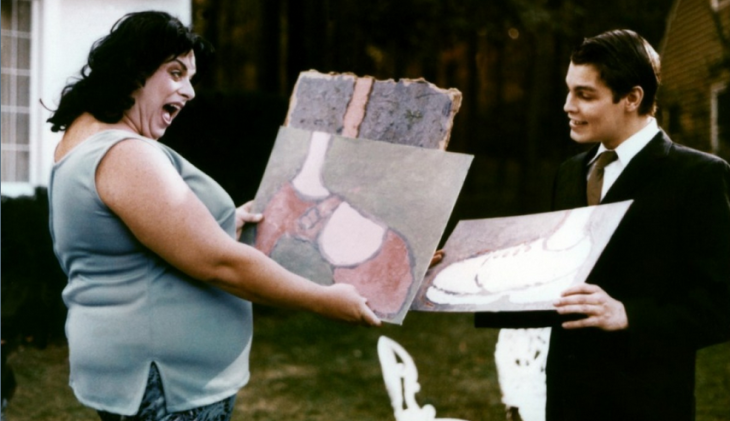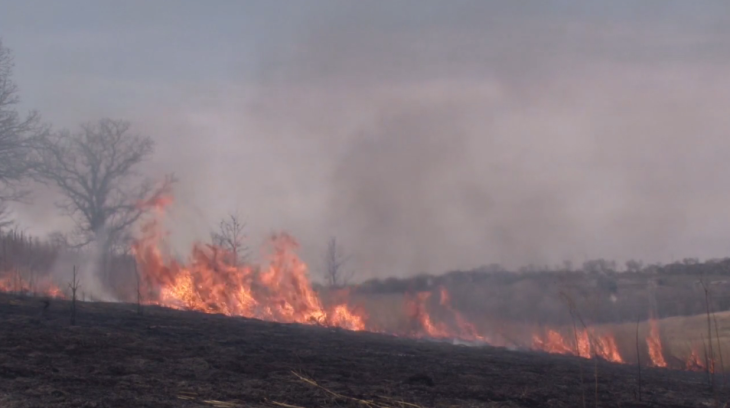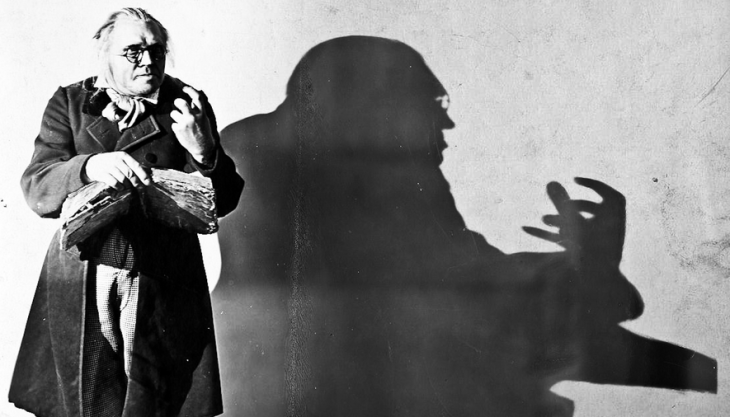As a running conversation, we offer our closing thoughts, observations and even a few suggestions in the wake of another Wisconsin Film Festival:
David: And that’s a wrap! I know I’m exhausted after eight days of films, but when you’re watching movies, who can really complain? And apart from the questionable audience grumbling about how the “Steep ‘n Brew Audience Award” is biased against under-the-radar indies or that there are simply “too many” films, I haven’t heard any beefs from festival-goers this year.
What about criticisms from the Madison film community? Shortly before the festival schedule was released, our colleague Jim Kreul wondered if 2015 was the “year of the deep cut.” Crime Wave. Roar. The Astrologer. Avenging Force. Half of the films under “Restorations and Rediscoveries” banner trended toward precious engagements (e.g. the eternally-disputed Chimes at Midnight or Robert Montgomery’s Criterion noir Ride the Pink Horse) but a good many others looked like fat trimmed from a Fantastic Fest or Butt Numb-a-thon — and in some cases they were exactly that.
I think part of that “deep cut” impression has been inflated, especially since many of the same folks who programmed this year’s festival put together the Cinematheque schedule leading to tie-ins with this spring’s Orson Welles retrospective and ironic Cannon Films salute. To his credit, Jim qualified that argument as an initial impression but I wonder: Has the festival dug deeper in 2015 than in years past? Perhaps the bigger question: Does that even matter?
Grant: Besides our running into one another on Wednesday and Thursday and a relatively short conversation with Jim last Friday, I didn’t converse with our fellow cinephile writers during the festival. Based on Chris Lay’s coverage for Tone Madison, he was particularly enthusiastic about Crime Wave, which interested me but conflicted with The Look of Silence (each with only a single screening). Trusting his assessment, I hope Crime Wave gets an official restoration on Blu-ray this year. If it’s making the festival rounds, then I’m confident it will see a physical release.
However, it’s the only one of the listed “deep cuts” that personally spoke to me. If Roar had concluded the festival on Thursday, I might have indulged my curiosity, but Polyester was given that honor. It’s fantastic that Cinematheque/WFF programmers pick up on the esoteric; I know Jim Healy, Director of Programming, has a particular fondness for the midnight movies and cult oddities even if I don’t always leap at the chance to watch them.

I don’t want to speak for anyone, but based on some of the offhand comments about paltry attendance for a few repertory selections at Sundance, it appears the festival has dug deeper this year. It matters, because it adds to this particular Midwestern, mid-size festival’s character. It is unfortunate that audiences, including myself, tended to skip them, because I felt like Madison Film Forum featured several reviews of those “deep cuts”; but like a lot of people who see a dozen movies or more, priorities are given to new films and emerging directors. And of course local audiences are on the lookout for “Wisconsin’s Own” filmmakers, whether dabbling in feature-length (Uncle John, Clarence, The Russian Woodpecker) or shorts (many of which you have featured for the past few weeks). As evidence, just look at the number of “rush only” screenings for those well in advance of the festival’s commencement.
In late March, you told me you were planning to dedicate your efforts to “Wisconsin’s Own” programming; of those you attended during the festival, do you feel audience reaction was more universally positive than in other films?
David: For better or worse, Wisconsin is a proud state but when it comes to supporting home grown filmmaking, this fellow Midwesterner is all for it. I wasn’t surprised to see enthusiasm at the “Storytime” shorts this year. Joe Shaffer, who’s accrued a grassroots fanbase with the help of various state and local publications, had a lot of fans in the audience for The Searcher, but even raunchier material like Safe Word, which blends sexual fantasy play and reality, or the more beautifully opaque in Dog Days, drew plenty of questions afterward. The contemporary art museum’s theater is not a large venue, but take it from the guy who offered to stand up at the back of the room: that theater was packed
Tone Madison’s Scott Gordon is a big proponent of diving into a random short film program and by and large, I agree with him. This year’s “Storytime” selections — which vacillated from the dry and outrageously gory (Geoffrey Broughe Handles Confrontation Poorly) to the bruised and softspoken (Cam Companion) — offered something for everyone and the nearly 30-minute Q&A testifies to that. If there’s a beef to be had with the festival’s treatment of local filmmakers, it’s the lack of synergy between features and their preceding shorts. Elizabeth Wadium’s Prairie Burns ran before Uncle John and, while both tap into the great outdoors in their own way, a docu-short about controlled prairie burns has nothing to do with Uncle John‘s bipolar murder/meet-cute. There’s a dreamy paranoia to the more lyrical segments of The Russian Woodpecker too, but the heightened pitch of its storytelling is nowhere close to Winterlude.
You had a more charitable take on that second particular pairing, but there’s so much to visually feast on with certain shorts that a “Hello, here’s your mic, goodbye” before the main course doesn’t do it justice. Before Prairie Burns on opening night, Wadium had all of 90 seconds to set up a documentary project that involved absolutely no dialogue or talking heads, featured a local company and was shot in the Madison area. The 4:15p screening of Russian Woodpecker was filled with older folks, some of whom seemed mildly flabbergasted at the Lynchian opacity of Greg Bishop’s Winterlude; and several were all too eager to whisper this to the screen. (Those pre-film reminders about turning off electronic devices should include a memory refresher that film is not a reciprocal medium.)
It’s impossible to perfectly sync up themes between every short and its respective feature, and sometimes that variety even opens up new comparisons. As someone who programs a film series for this kind of stuff, I’m also more than a little biased.

Grant: I guess was so entranced by Winterlude that I failed to pick up on any chatter; were there really a noticeable number of people whispering? On some level I’ll agree that Bishop’s short was not the ideal lead-in to Gracia’s documentary, as the two are separated by degrees of reality; one is fiction and the other is not. As I noted, Winterlude’s surrealistic sci-fi overtones make for a perfect segue into Glazer’s Under the Skin. However, this specific programming choice with The Russian Woodpecker might have been more related to the personality of the short’s director and the personality of Fedor Alexandrovich, performance artist-activist and subject of Gracia’s feature. For me, it worked, but my sensibility and impressions are atypical.
Honestly, I’ve found preceding shorts to the full-length features in the last couple years to be well-considered and synchronized. At last year’s A Spell to Ward Off the Darkness, I remember the stillness of its introductory river meditation, Maz-zo-man-nee, a local short by Jon Salimes. My friend Sean remarked, as a criticism, that it was perhaps “too perfect.” These are just two examples, and it seems like you’ve had the opportunity to get a broader consensus. Perhaps you feel it is more appropriate to reserve the short films for their own individual programs? I suspect that programmers attempt to do this initially but simply can’t find the proper thematic spaces for everything cinematically inspiring. I absolutely regret not taking advantage of any short film programs this year, but there were time and availability conflicts for at least three of them. Next year, I’m going to re-prioritize my viewing. I feel like the Saturday evening-night slots are especially valuable, and they were robbed by the one-time screening of Phoenix. It’s a film I most wanted to watch and not a decision I regret; however, at this point in time, it has left me with a feeling of inadequacy with regards to your question. Winterlude was the only short I watched at the WFF this year, and it was a thing of beauty. For documentaries and locally produced films, the physical presence of directors, producers, and subjects in Q&As are invaluable to revealing details of conception, production and continuing developments that didn’t make their way into the film. Sadly, there wasn’t any time for conversation about Winterlude following The Russian Woodpecker, as most everyone sought additional answers to Fedor’s journey.
While we lament the suppressed voices of short filmmakers within certain programs, I would like to comment on my sincere appreciation for the quality of the art house/philosophical fare that Mike King has continued to helm. Chances are, if Mike introduces a screening with his usually thoughtful comments, I’m liable to enjoy it. And even if I don’t, I admire the opportunity to have seen it theatrically. There are a number of films in this year’s guide that I would have otherwise overlooked if it weren’t for his vivid descriptions. They aren’t the “deep cuts” we touched upon earlier, but films that most interest me as someone who appreciates the cinematic medium’s ability to address serious issues. Is there a certain programmer you feel a kinship with or one you miss from years past? And is there a certain venue you prefer in the festival’s footprint or one that used to be utilized but wish would return? Because I spent most of my time at Sundance (with 11-12 films), I started to jokingly refer to myself as “The Sundance Kid.” Their seating is probably the most comfortable, but I think I missed part of the downtown/core festival experience. As you attended more than a few screenings at the Capitol and on UW campus, do you think that assessment is accurate?
David: I think you have a better grasp on who’s influenced what portion of the festival than I do. If I were to make an educated guess, Jim Healy’s influence has been both critical and essential in the years since he’s taken over programming. The Grim Game on closing night was a spectacularly underestimated entry on my part. Harry Houdini, while not nearly as prolific an actor as he was an illusionist and escape artist, really sells the part of a heist-man with a surfeit of knot-slipping skills and balcony dangling stunts. I suspect Healy’s former digs at the George Eastman House played some part in securing preservationist Rick Schmidlin to speak to the Herculean task of restoring a nearly 100 year old print. Likewise, The Cabinet of Dr. Caligari (another oldie but goodie) was made all the better because of David Drazin’s 70 minutes of non-stop organ accompaniment in the Capitol Theater.

I’m glad the festival has come back to the Capitol Theater. It’s an historic venue, the kind that retains its older qualities without seeming dumpy and rundown. Given the right presentation, it’s a church for cinephiles and in keeping with the “identity” of a local film festival as intrinsic to Madison as this one. Shifting the final four days of the festival to Sundance on the other hand, has been a mixed bag for me. I saw a few #wifilmfest grumblings about poor line management at Hilldale. My experience with volunteers and staff was nothing short of jovial, but restricting the back-half of programming to a part of the city that’s already busy with patrons at the mall’s other stores and restaurants doesn’t seem conducive to parking or crowd control, and when every screen at Sundance is only accessible from the front of the building, you end up with awkward waiting areas or worse, people leaning outside against the marquee posters.
Sundance as a whole has lacked a certain “pep” in the last year that feels like it’s leeched off my enthusiasm, but it really felt like the festival was “squatting” for four days, and the barren and dimly-lit parts of the building didn’t help. Can the “Overflow Bar” exist without a post-screening chat on a Tuesday? Sundance looked like they were prepping to renovate 50% of their facilities on closing night. Polyester wafted away a lot of that stench but that’s not good. This might be more on Sundance’s management than festival staff, but if our only option is Hilldale for the tail-end of things, let’s liven the place up a bit. Volunteers essentially double the staff on hand and with ticket sales geared toward festival films, let’s use Sundance’s paid employees to turn on some lights and maybe serve a cocktail or 12. Or am I asking for too much, Sundance Kid?
Grant: Based on your answer, on the contrary! I’m really glad you mentioned Jim Healy’s George Eastman House connections, which have greatly aided the securing of newly restored prints of silent archival films (and booking special guests, too, as the WFF has just proven). Chicagoan and standard Cinematheque player for silent film, David Drazin, is wondrous on piano, keyboard and organ; his enduring ability to improvise on the instruments is reminiscent of one of my recent favorites, virtuoso pianist-composer Lubomyr Melnyk and his “continuous music,” even if the two are stylistically separated by several degrees. If I hadn’t been at the movies until 11:15p Friday and committing myself to a write-up of the day’s films, I probably would have gone to Dr. Caligari, but the early time discouraged me. I’m a night owl.
If that isn’t a perfectly flattering description for the Capitol (“a church for cinephiles”), then I don’t know what is. You’re probably right to feel like the historic venue is intertwined with the history and identity of the WFF, much like the Orpheum, which isn’t an option anymore after renovation and management changes. There is something to say about that sort of venue inspiring a religious-like devotion and nostalgia for the first years of the festival; the festival year absent a larger downtown venue sparked some public outcry. So there is something magnetizing about a well-maintained hall that allows for the greater number of people to share in an experience. There will be distinction between your watching Kurt Cobain: Montage of Heck at the Capitol with a crowd of nearly a thousand, and, as I plan to do next month, watch it alone on HBO (Now) at my convenience.
I agree that the Sundance-exclusive programming during the final days of the festival feels somewhat anti-climactic. I’m sure Capitol programming after Sunday just wasn’t possible due to scheduling conflicts; additionally, attendance would be expectedly lower and verify Jim Kreul’s comments (“There’s nothing more energy-draining than an under-attended Capitol Theater.”) Securing the Marquee and 4070 Vilas Hall are probably out of the question on weekdays, too, but I wonder if it would be possible to continue screening movies at the Chazen and MMoCA. Maybe reserve any films/documentaries about art, art history, writing, and filmmaking to those venues? If that seems too limiting, it probably is, but it’s a potential idea to avoid some of the problems you addressed. Additionally, the festival wouldn’t vanish from the isthmus. If the standard is now going to be eight days instead of three or four, it seems integral that at least one other venue screen films outside Sundance.
As a person who prefers to hide in the shadows, the low-lighting and dim hallways weren’t that noticeable or bothersome. But if it was dispiriting to you, then I’m sure other people minded as well. You could have picketed the event while carrying floor lamps as substitute torches. Sundance’s logistics are more complicated simply because there are three theatres contained under one roof. Line management was handled differently this year than in the past three. To improve traffic flow, I’m guessing the captains (Victor, Renee, and Perry) designated Theatre #5’s ticket-holder line to be outside along Kelab Dr (as I experienced on Sunday) and the rush line for Theatre #1 to be outside across from Flat Top Grill. Thankfully, the weather cooperated most of the time, so it was hardly an inconvenience, but it certainly could have been in the rain.
I do have a couple complaints during my time at Sundance; one was courteously addressed by theatre captain Perry about sound leakage from the lobby area into Theatre #1. I first noticed this while watching Decor Saturday afternoon, and he said that the theatre door doesn’t automatically close; it needs to be pushed shut. During the next film, Amina Profile, he was especially conscious of the issue, and I did notice a difference. Here’s hoping that maintenance is able to fix the door, because it’s likely a problem (albeit a slightly lesser one) during any other weekend.
The other issue wafted into my face during the 1:00p showing of A Pigeon Sat on a Branch Reflecting On Existence on Wednesday; a couple in the row in front of me proceeded to loudly chow down for what seemed like a half-hour. Because Sundance permits food and beverage, I guess they thought it would be appropriate to eat their entire lunches during the first movie of the day. Not really. In a Roy Andersson picture that well-regards timing and silences for comedic effect, it’s distracting. Please suggest that citrus/orange chicken sandwiches and kettle-cooked potato chips are best enjoyed in the cafe. Maybe that should have been my picketing sign.

1 Comment